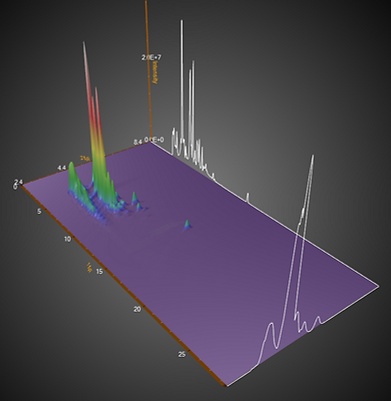
Legacy UCM/TPH Testing Leaves You Guessing
Conventional “total petroleum hydrocarbons” numbers can’t untangle LNAPL, so critical questions stay unanswered.
-
Hidden composition: Aliphatics and aromatics blur together, making mass‑removal progress hard to prove.
-
Method‑driven variability: Different labs, standards, and regulations yield wildly different results.
-
UCM blind spot: Unresolved Complex Mixtures can be problematic, delaying decisions and inflating remediation costs.
High‑Definition 2‑D Simulated Distillation Turns Data into Decisions
Our two‑dimensional simulated‑distillation analysis separates samples by volatility and polarity, producing a clear 3‑D chromatogram that drives action.
-
Quantified blocks: Accurate aliphatic and aromatic volumes (or concentrations) plus total TPH, saturation, and mass of submerged LNAPL.
-
Forensic clarity: Side‑by‑side plots differentiate site releases from background or commingled sources.
-
Proof of performance: Track composition shifts—aliphatic drops signal biodegradation; aromatic drops confirm chemical oxidation—so you know when to adjust or conclude treatment.
-
Faster closure: Chemically resolved, reproducible data streamlines risk communication, satisfies regulators, and shortens the path to site closure.

